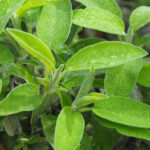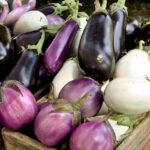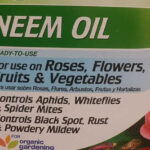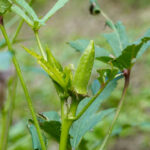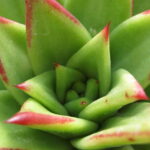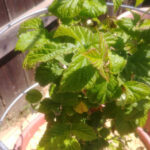Growing cabbage can be such a rewarding experience. But it sucks to harvest cabbage after winter has passed and find out it’s been a snack for cabbage worms. It’s important to monitor your cabbage, identify pests, and control cabbage worms as quickly as possible. Unchecked, they can do a lot of damage to your whole crop.
Another reason to be vigilant is that they don’t just go for cabbage plants. They go for brussels sprouts, mustard greens, and radish too, among others. Knowing what to do is your first line of defense in dealing with these maligned worms.
Among the cabbage industry, they’re known as imported cabbage worms because they were first discovered in Canada and disappeared for a while to emerge in the Southern US, especially in the Gulf Coast. Today, temperate regions across the world host it and its adult form, the cabbage white.
So let’s discuss how to identify, manage, and control these caterpillars in the garden.
Subscribe to the Epic Gardening Podcast on
What Are Cabbage Worms?
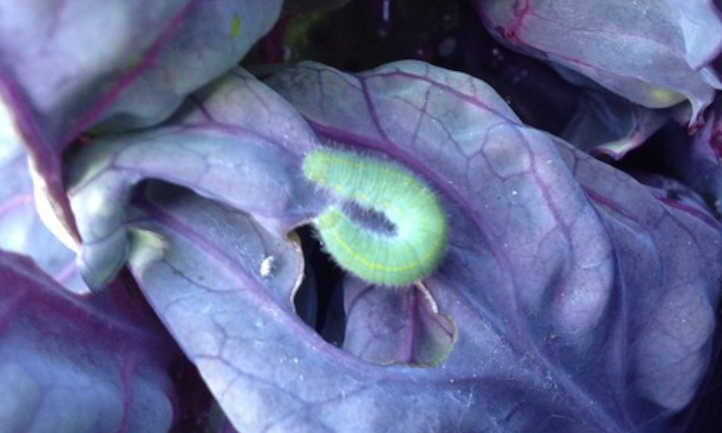
The cabbage worm is the larval form of the small white or large white butterfly, both commonly known as the cabbage white butterfly. They are common in temperate areas of the world and were first discovered in North America in 1860.
It spread rapidly to other areas of the continent, and by 1886 was well established in states in the Gulf Coast and the Rocky Mountains. The cabbage worm is primarily a pest of cabbage, but also attacks other brassica crops – or those in the mustard family – and vegetables.
Where there is a brassica, there is often imported cabbage worm and their cousin, the cabbage looper. They live out several life cycles in a year, and in areas where temperate weather lasts year-round, they’re particularly damaging.
Similar Pests
There are other moths or butterfly insects from the Lepidoptera order which are often included in the cabbage worm category. These include the cabbage looper (Trichoplusia ni), the cabbage moth (Mamestra brassicae), the cabbage webworm (Hellula undalis), the orange tip butterfly (Anthocharis cardamines), and the diamondback moth (Plutella xylostella or Plutella maculipennis).
Their life cycles and reproduction may be different from the Pieris genus, but they attack similar plants and are often eliminated in similar ways.
Cabbage loopers are often confused for cabbage worms. It’s important to know the difference between them because their treatments are different. Be sure you’re not dealing with the cabbage looper before you spring for biological controls or pesticides. We have a piece on cabbage loopers here to help you with identification.
Types of Cabbage Worm
There are two species we’ll focus on in this piece. Both of these develop into different types of cabbage white butterfly, so these worms are a green caterpillar in either larval form.
Pieris rapae
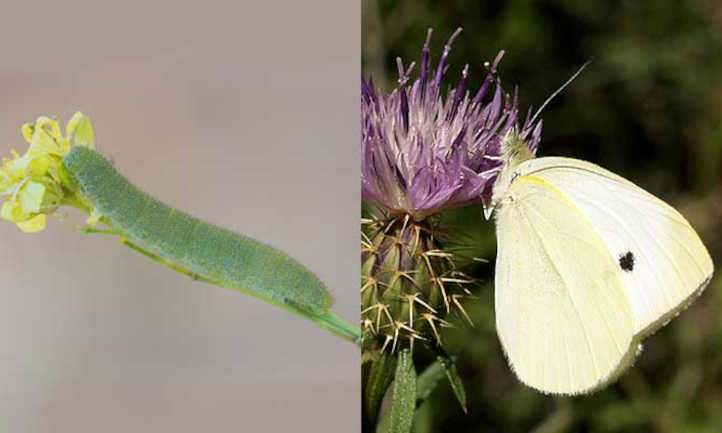
Small white butterflies (Pieris rapae) are widespread across Europe, Asia, North Africa, and South America. It also has been accidentally introduced to North America, Australia, and New Zealand. Its larva, imported cabbageworm, is a major pest in commercial agriculture due to its feeding habits. The term ‘small white’ comes from the coloration of the adult butterfly, which is white with a few black markings on its wings. Pieris rapae is smaller than its related brassicae relatives.
Pieris brassicae
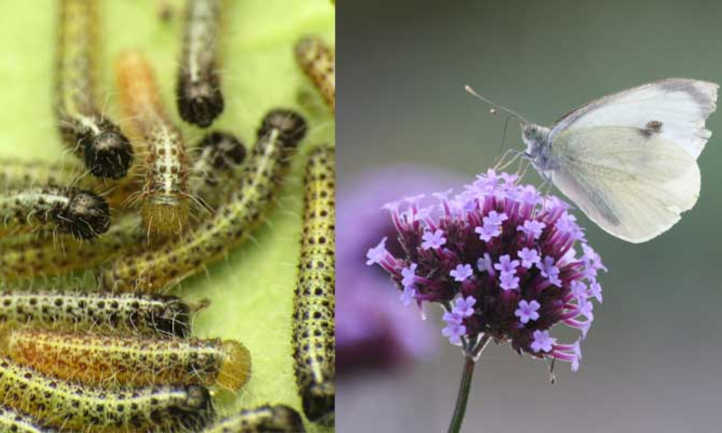
The large white (Pieris brassicae) is common throughout Africa, Asia, and Europe, and has been accidentally introduced to Australia and New Zealand. While it’s fairly uncommon in North and South America, it is not completely unknown there and has been reported in the northeastern United States on occasion. As an adult, it is a large white butterfly with black dotting on its wings and large black patches at the wingtips.
Cabbage Worm Life Cycle
Cabbage whites will lay their eggs on the underside of plants in the Brassicaceae family. These host plants are good food sources for larvae. Small whites tend to lay a single egg on a given leaf, whereas large whites tend to lay eggs in large numbers on a singular leaf.
When the small white eggs hatch, tiny velvety green larvae with dark heads emerge. At this point the legs are not heavily defined, thus they are regularly referred to as worms or the term ‘cabbage worm’.
As the larvae feed, these tiny worms go through five larval phases or instars during which coloration changes, becoming larger and more uniformly light green with fewer dark patches as it molts between each phase. When imported cabbageworms are fully-grown caterpillars they form a pupa, from which will eventually emerge an adult cabbage butterfly.
The life cycle of the large white is nearly identical except for the coloration of the caterpillar. Large white caterpillars tend to be yellowish in coloration with a brown head. As they go through their larval phases, brown spots along the sides manifest. It similarly pupates, and eventually an adult large white will emerge.
Worm Hosts
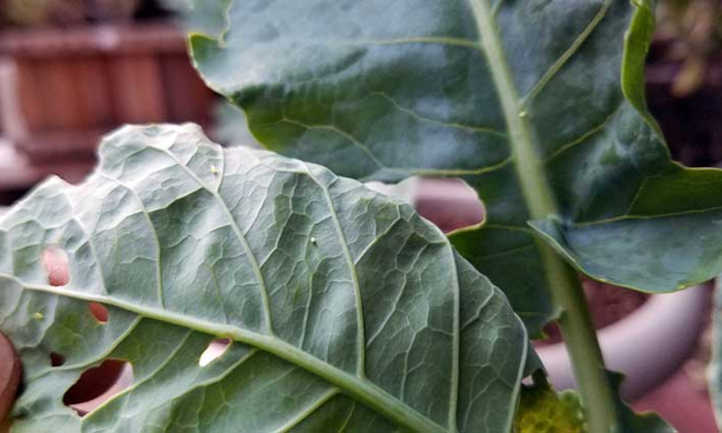
This little green worm likes to live where it eats. But because it’s found around the world, it has a surprisingly wide diet. You’ll find eggs laid on the underside of leaves of cabbage crops and other plants in the cabbage family. When they hatch into worms, they eat their way around and through your brassica plants.
While you can find them in ornamental gardens as well as those containing other cabbage family crops, usually the first sign to watch for is white butterflies. Most likely these are cabbage white butterflies. Where they are, there are likely to be green cabbage worms.
They prefer plants that produce natural glucosinolates or glucosides. This includes nearly every cruciferous food plant. They’re fond enough of broccoli that they’re occasionally called broccoli worms. Here’s a more extensive list of edible cruciferous plants which they favor, both for egg-laying and for feeding purposes:
Cabbage, turnips, broccoli, cauliflower, bok choy, kale, Napa cabbage, garden cress, Brussels sprouts, collard greens, horseradish, savoy cabbage, watercress, broccoli romanesco, mizuna, bomdong, kohlrabi, broccoli rabe, choy sum, cime di rapa, gai lan (Chinese broccoli), komatsuna, arugula, radish, daikon, wasabi, tatsoi, mustard greens (white, Indian, Ethiopian and black mustards), rutabaga.
While other crops are susceptible, they do prefer to stick with ones that provide those natural glucosinolates. However, they have been reported to impact tomato plants, spinach, lettuce, and other garden crops. Though, commonly, those latter plants are under attack by cabbage loopers that have been misidentified. But it’s safe to say that if you have problems with one, you can easily develop problems with the other!
Identifying Cabbage Worms Damage
Identify cabbage worms and cabbage worm damage by their presence on your plants or by the presence of cabbage butterflies fluttering around the base of plants. You can tell they’ve been there by the byproducts left as the pests feed. Their dark greenish-brown and spherical fecal matter are left behind in the areas where they feed. In this case, there are likely to be holes in cabbage leaves or heads, or in whatever crop you’re growing.
You might think this is no biggie since cabbage heads develop in layers of thick leaves. But worms can bore into heads by chewing a series of irregular holes in leaves.
Another indication you have a cabbage worm problem is the presence of eggs. These are usually whitish or yellowish and elongated, with a point at the top and pointed ridges down the sides.
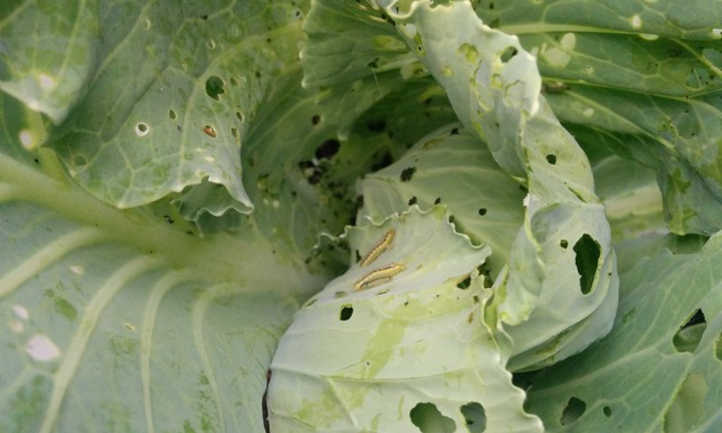
Controlling Cabbage Worms
Now that we’ve covered identifying cabbage worms and their damage, let’s talk about prevention and treatment. Note that if you check your plants and find cabbage worms on more than 10% of your crop, it’s best to treat every plant of that type to prevent future issues. If you’re growing just a few plants they like, treat them all from the get-go.
Cultural Control
The best form of controlling this garden pest culturally is to keep the area where you’re growing your Brussel sprouts, cabbage, or turnip greens free of weeds that host them. Any weeds in the brassica family are key targets for the cabbage white butterfly.
Another viable control involves crushing eggs. If you see them, either singly or in clusters, put on a pair of gloves and carefully remove them from the leaves of your plants. Rinse them off in soapy water and dispose of them, or crush them. Either way, you’ll prevent more caterpillars from hatching and devouring your garden.
Similarly, if you see the caterpillars themselves, pick those off and destroy them. These are great snacks for fowl who may already be a part of your biological control strategy. Be careful not to destroy ladybug eggs in the process, which look similar, but are more ovular.
Companion planting is another great cultural method of controlling these pests. Companion plants that deter cabbage worms include borage, thyme, chamomile, and celery. The worms detest the taste and smell of celery. Companion planting with borage and chamomile keeps moths and butterflies away. The scent of thyme overpowers the scent of host plants worms love to munch on. Trap crops like mustard are great companion plants as well.
Remove plant debris that may have eggs or worms on it. It’s ok to remove a few leaves on your plants if they have eggs on them. Do not compost them. Instead, destroy them to prevent further issues.
Biological Removal of Cabbage Worms
How do you get rid of cabbage worms? The most popular organic pest control – and one of the most effective – is the use of Bacillus thuringiensis var. kurstaki. Commercially, this is generally referred to as Bt or BtK. Spraying this bacteria on your plants won’t harm the plants, but it will harm caterpillars and worms who feed on the plants.
BtK is also available in a powdered format if you prefer a non-spray alternative. As the caterpillar feeds on dusted plants, the ingested bacteria rapidly generates a poison that suppresses the worm’s appetite. As a result, it stops feeding and rapidly dies of starvation. However, it can potentially harm some beneficial butterfly larvae (like monarch caterpillars), so don’t use this unless you can see the worms or their yellow eggs.
Organic insecticides such as spinosad or pyrethrin are commonly used to combat cabbage worm infestations. These are effective, but they are more hazardous because of their danger to beneficial insects. Generally, BT spray will handle the majority of your issues. However, if you must use them to repel cabbage worms, spray a light misting over the entire plant, and only apply them when eggs are present or larvae are small. Repeat applications in intervals of 7 to 10 days.
Some people use food-grade diatomaceous earth powder on the leaves of their plants. This material, which doesn’t harm humans at all, will cut the worms’ soft bodies and cause them to dehydrate and die. It can also harm other insects as well, though.
An old folk tale states that sprinkling rye flour over cabbage plants in the early morning also causes cabbage worms to dehydrate and die. Another recommends dampening the leaves of your plants and sprinkling them with cornmeal. The cornmeal swells up inside the stomachs of the cabbage worms when they eat it, killing them.
Cabbage worm’s natural enemies include yellow jackets, parasitic flies, parasitic wasps (such as Trichogramma wasps), green lacewing, predatory beetles, spiders, and birds such as the house sparrow or skylark. Sometimes you can find colonies of their natural predators in nurseries. Buying these and unleashing them on your crops is only one part of the process. You’ll need a well-established habitat for them to dwell in. Plant yarrow, parsley, Queen Anne’s lace, coreopsis, and others to encourage the natural habitation of beneficial insects, like parasitic wasps in your garden.
Once the larval form of the worms is large enough to be a tasty treat, chickens will gobble them up. Chickens may also peck at your vegetables. Therefore, be sure your plants are large enough to handle a little rough treatment before unleashing the garden fowl. If you are growing your bird’s favorite foods, pick them off your plants yourself and take them to the coop for a tasty treat.
Insecticidal Removal of Cabbage Worms
Outside of BtK, there aren’t many organic insecticides that treat cabbage worms while they are feeding. Neem oil is useful, but only to coat and suffocate the eggs cabbage butterflies lay. If you’re going to spray neem on flowering plants, do so in the morning before the sunrises and peak pollinator activity ensues. An alternative to this time is at dusk before nocturnal pollinators come out.
Several chemical pesticides have shown effectiveness on brassicas. However, these are the riskiest form of treatment you have at your disposal. Therefore it may be best to wait to use this method until all other options are exhausted.
Preventing Cabbage Worms
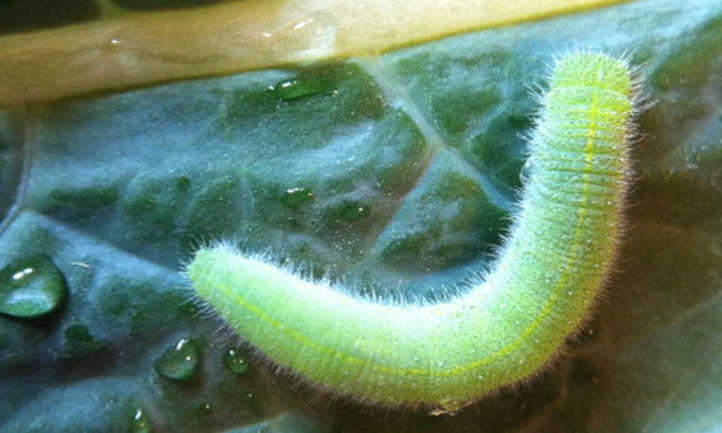
One of the simplest techniques used to prevent cabbage worms is to use floating row covers of fine nylon mesh over your plants. If you can keep the butterflies from reaching your plants in the first place, you keep the butterflies from laying eggs. Row covers also provide a little shade for your plants. The best part about row covers is that they control cabbage worms by preventing cabbage moths from even landing on your plants.
Another option is to use garlic sprays that repel cabbage moths and butterflies, keeping them from laying eggs on your plants. You can buy garlic oil sprays, but you can also make your own. This works for June bugs, squash bugs, aphids, and a variety of other insects. Adding a little mint or neem oil to this can be beneficial, too.
Caterpillars also don’t like citrus, so you can make a citrus repellent. Grind up the rinds and seeds of any type of citrus fruit. Soak the ground citrus parts in 2 cups of water overnight, then strain out the pulp. Add 2 teaspoons of dish soap to this and mix thoroughly. Spray all of the plant’s surfaces with that.
Neem oil may also be good on its own. While it doesn’t prevent the butterfly from laying its eggs, neem oil can make it less likely that the eggs will hatch if they’re drenched with it. It also coats the surface of the leaf and leaves a bitter flavor, stalling the worms from eating your plants. It isn’t quite as effective as garlic or citrus sprays are, but it does act as a repellant.
Sticky traps posted up next to your plants, or even next to floating row covers as a second line of defense will trap cabbage moths – like the diamondback moth, for instance – preventing egg-laying as well.
Finally, green cabbages are more likely to suffer attacks by cabbage worms. Reduce the occurrence of cabbage worms by planting red and purple varieties. With so many kinds of purple cabbage, you have lots of options! Just be aware that purple cabbage is still potentially susceptible, if not as commonly targeted.
Frequently Asked Questions
Q: Will soapy water kill cabbage worms?
A: You can drown them in soapy water, but simply spraying them won’t do a thing.
Q: Can you eat cabbage with worms?
A: That’s not advisable, due to the likelihood of parasitic worms present in their bodies. Instead, feed them to your chickens or local birds who can digest them out of their bodies.
Q: How do I keep cabbage worms out of my garden?
A: Row covers are great, and so are preventative sprays, and traps. See the Prevention section above.
Q: Will baking soda kill cabbage worms?
A: While this is a widely used and touted method, it will not harm the worms.
Q: Will vinegar get rid of cabbage worms?
A: This is another widely accepted mode of killing them, but doesn’t work. Instead, use the methods listed above.
Q: Do cabbage worms attack any ornamental plants?
A: Yes! Not all of the Brassicaceae family of plants are edible to humans, and they can be ornamentals. One of the most likely ornamentals to be attacked is alyssum, but nearly any of this plant family is subject to infestation, as almost all of the plant family has natural glucosinolates. If you’ve got alyssum, lunaria, or other ornamentals that fall into this family of plants, they could be targeted.
Q: Are they poisonous to humans?
A: Not at all. They’re completely harmless to us, except in terms of how they can demolish our plants. In fact, they can be an indicator of an organic garden. If you ate one, while it probably wouldn’t taste really good, it wouldn’t make you sick at all.


